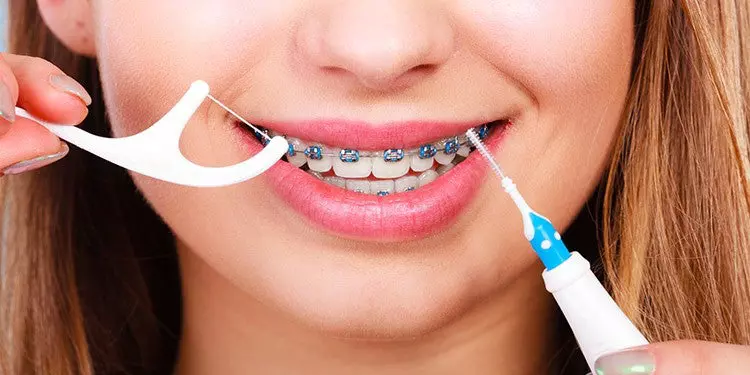For many people, starting orthodontic treatment can feel like stepping into the unknown. Whether you’re a teenager getting braces for the first time or an adult finally taking the plunge, adapting to life with braces takes some time. But with the right habits and a positive mindset, you’ll soon find your routine—and your smile—transformed for the better.
Orthodontics isn’t just about straight teeth or aesthetics. This specialized field of dentistry focuses on correcting misaligned bites, crowded teeth, and jaw issues. More importantly, treatment can improve long term oral health by making it easier to clean teeth, reduce the risk of decay and gum disease, and prevent jaw discomfort and wear over time.
Life with Braces can be a big adjustment, but it’s also an exciting step toward a healthier, more confident smile. Orthodontics involves more than just straightening teeth—it’s a specialized field focused on correcting bite issues, aligning jaws, and improving oral function. While wearing braces may require changes to your eating and cleaning habits, the process becomes easier with time and guidance from your orthodontic team. Thanks to advancements in orthodontics, patients today have access to more comfortable, efficient treatment options than ever before. With commitment and proper care, orthodontics can lead to lasting results that go far beyond appearance—supporting better oral health for life.
If you or a loved one is starting life with braces, here’s a practical guide to make the transition smoother and ensure success throughout the journey.
Eating with Braces: What to Avoid and What to Enjoy
One of the first things patients notice after getting braces is how much their diet needs to change. Certain foods can damage brackets or wires, while others might be hard to clean out from between the teeth.
Foods to Avoid:
- Sticky foods like gum, caramel, and taffy can get caught in braces and pull on wires.
- Hard foods such as nuts, popcorn, and ice can break brackets or cause discomfort.
- Crunchy items like raw carrots or apples should be cut into small pieces or avoided altogether.
- Chewy foods like bagels or crusty bread can tug on brackets and make chewing difficult.
Braces-Friendly Foods:
- Soft fruits and cooked vegetables (bananas, berries, steamed broccoli)
- Soft grains and pasta
- Dairy products like yogurt and cheese
- Tender meats and eggs
- Smoothies and soups
Eating slowly and carefully is key. Avoid biting into foods directly with your front teeth, especially in the first few weeks of treatment when your mouth may feel sore.
Cleaning with Braces: Maintaining Great Oral Hygiene
One of the most critical aspects of orthodontic care is keeping your teeth clean. Braces create more surfaces and crevices where food and plaque can hide, so regular brushing and flossing become even more important.
Brushing Tips:
- Brush after every meal using a soft-bristled toothbrush and fluoride toothpaste.
- Use a 45-degree angle to brush above and below the brackets.
- Consider using an electric toothbrush designed for braces.
Flossing Tips:
- Flossing can be tricky with wires, but it’s essential.
- Use floss threaders, orthodontic floss, or a water flosser to clean between teeth effectively.
Additional Tools:
- Interdental brushes can clean around brackets and under wires.
- Mouthwash helps reduce bacteria and maintain gum health.
Maintaining excellent hygiene isn’t just about avoiding bad breath—treatment can improve long term oral health only if teeth and gums stay in good condition throughout the process. Poor cleaning can lead to decalcification (white spots), cavities, or gum inflammation, which can delay or complicate your orthodontic journey.
Smiling with Braces: Confidence and Positivity
At first, many people feel self-conscious about how they look with braces. This is normal, especially for teens navigating school or adults in professional settings. But it’s important to remember: your braces are temporary, and your smile is forever.
Tips for Smiling with Confidence:
- Practice smiling in the mirror to get used to your new look.
- Keep lips hydrated to avoid discomfort or dryness.
- Use wax on brackets if they irritate your lips or cheeks.
Wearing braces can be a great conversation starter, especially since more adults than ever are choosing orthodontics. Embrace your treatment and know that every adjustment is bringing you closer to a healthier, more confident smile.
Other Helpful Habits for Success
- Attend all scheduled appointments with your orthodontist. Regular adjustments keep treatment on track.
- Avoid bad habits like chewing on pens, biting nails, or opening packages with your teeth—these can damage your braces.
- Wear elastics or appliances as prescribed by your orthodontist for optimal results.
- Stay patient and positive. Some days may feel frustrating, especially with soreness or dietary restrictions, but the long-term reward is worth it.
The Big Picture: Why Orthodontics Matters
Orthodontics is more than a cosmetic solution—it’s a foundation for better oral function and health. Straight teeth are easier to clean, reducing the risk of decay and gum disease. Proper bite alignment can also alleviate jaw strain, prevent premature wear on teeth, and improve speech or chewing.
Ultimately, treatment can improve long term oral health, which benefits your overall well-being. A properly aligned bite can lead to fewer dental issues down the road and contribute to a healthier, more confident life.
Life with braces comes with a learning curve, but with mindful eating, diligent cleaning, and a positive attitude, you can sail through your orthodontic journey with confidence. The result—a healthier, straighter, more radiant smile—is something you’ll carry with you for a lifetime. And that makes every adjustment, sore tooth, and skipped caramel apple completely worth it.
